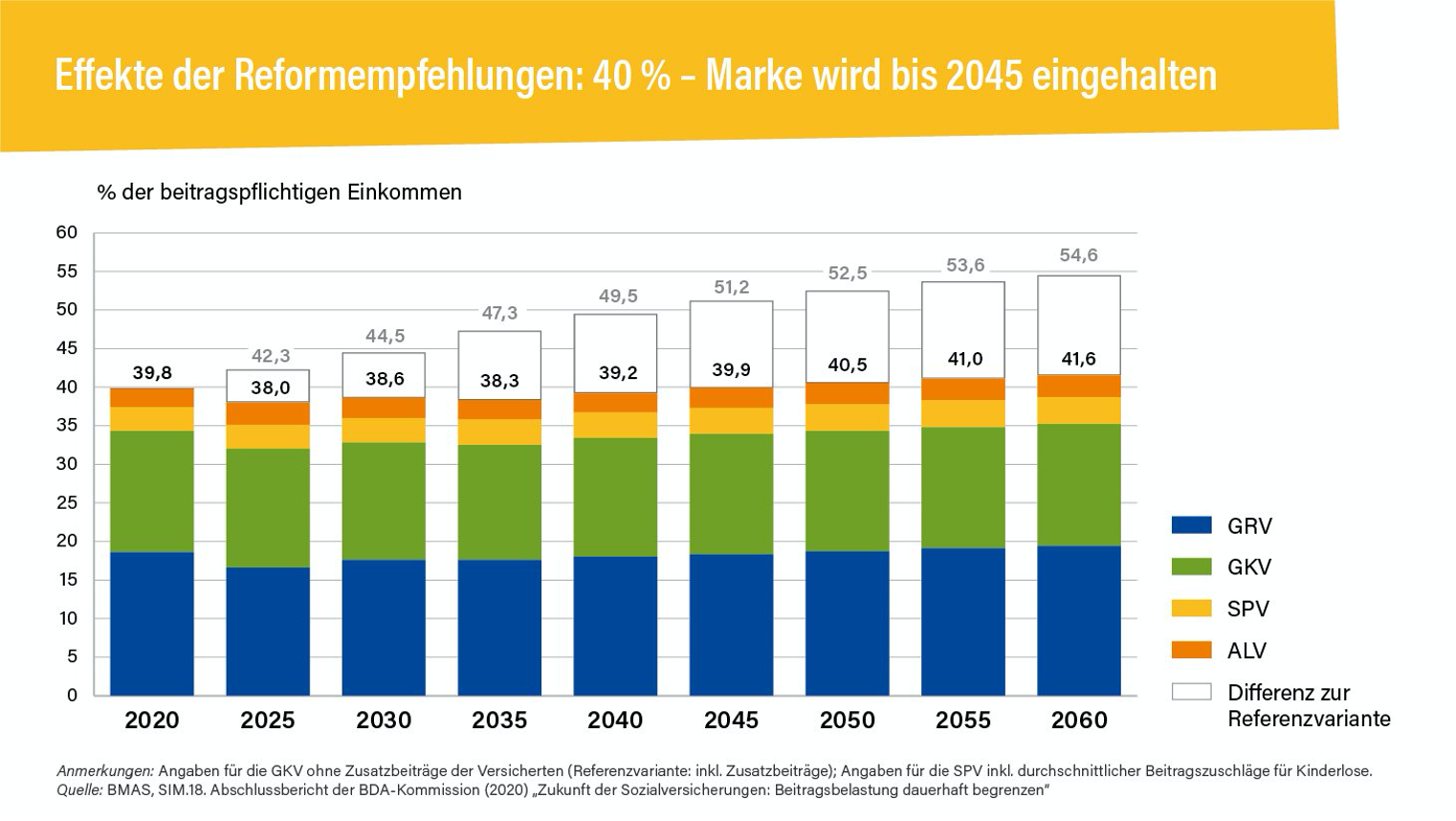The future of social security
In February 2019, the Confederation of German Employers' Associations set up a commission on "The Future of Social Security: Permanently Limiting the Contribution Burden "*. Under the leadership of Professor Dr. Werding (Ruhr University Bochum), this commission has developed proposals on how the total contribution rates of the statutory social insurance funds can be kept below 40 percent in the long term.

©AdobeStock William W. Potter
The commission report shows that the already high burden on wages and salaries is expected to increase significantly in the coming decades. On the basis of the currently applicable law, a contribution rate increase to around 50 percent (49.6 percent) is to be expected by 2040. This would create massive risks for international competitiveness and domestic economic development, with unfavourable effects on employment, and would also jeopardise social cohesion and a fair balance between the generations involved. The political goal of an upper limit of 40 percent for social security contributions was not set arbitrarily, but was rather the result of experience with economic development in Germany.
The proves that it is not easy, but very possible to effectively limit the overall social security contribution to below 40 percent despite the demographic development. To achieve this, however, a consistent reform course would have to be initiated, which would also include uncomfortable measures, such as a further extension of the active working life phase. This would not only have a favourable impact on the contribution rate and security level of pension insurance, but could also have a broad impact on the finances of the other social insurance branches and on the economy as a whole.
In particular, the Commission recommends the following measures to limit social contributions on a permanent basis:
- Extending the active phase of life: automatic linking of the standard retirement age to life expectancy
- Abolish early retirement without deductions
- Increase deductions and supplements in the event of early or later retirement
- Strengthen sustainability factor
- Fully finance non-contributory benefits from the federal budget
- Enable stricter care management based on selective contracts between health insurance funds and physicians and hospitals
- Change hospital demand planning, introduce monistic hospital financing by SHI and provide tax funds for the necessary investments
- Offer SHI tariffs with care management as optional tariffs and levy additional contributions for other SHI tariffs that are independent of the insured person's income.
- Introduce sustainability factor for adjustments to care benefits
- Strengthen the character of unemployment insurance as a risk insurance financed by contributions, e.g. limit the maximum duration of claims to unemployment benefits to twelve months.
*The BDA Commission is a body of academia and business chaired by Prof. Dr. Martin Werding (Ruhr University Bochum), co-chaired by Ms. Heide Franken (former Managing Director at Randstad Germany, former BDA Executive Committee member). Further members are: Mr. Bertram Brossardt (vbw - Chief Executive Officer), Ms. Prof. Dr. Tabea Bucher-Koenen (ZEW and University of Mannheim), Mr. Prof. Dr. Michael Hüther (IW Cologne), Mr. Steffen Kampeter (BDA Chief Executive Officer), Mr. Prof. em. Dr. Dr. h.c. Wolfram Richter (Technical University of Dortmund), Mr. Holger Schwannecke (ZDH Secretary General) and Mr. Oliver Zander (Managing Director of Gesamtmetall).










